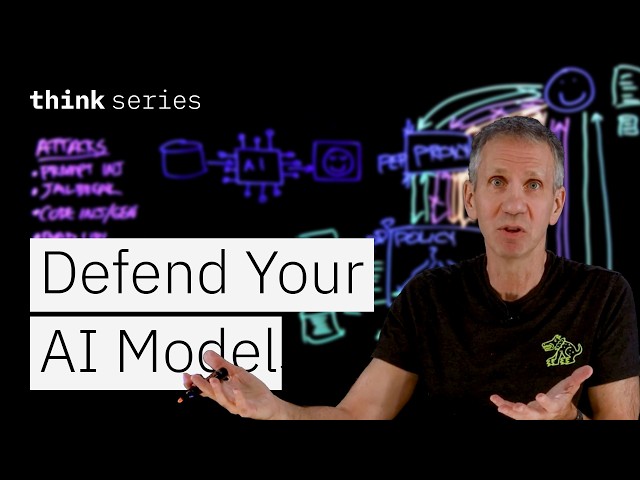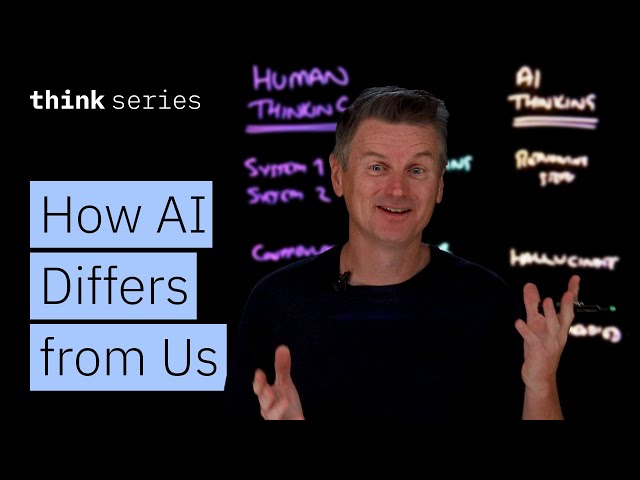Type: Article -> Category: AI What Is
What are AI Models?
Understanding AI Models: Formation, Functionality, Structure, Significance, and Future Horizons

Publish Date: Last Updated: 10th November 2025
Author: nick smith- With the help of GROK3
Artificial Intelligence (AI) models are the backbone of modern AI systems, enabling machines to perform tasks that mimic human intelligence, such as recognizing images, understanding language, or making decisions. This article explores what AI models are, how they are formed, how they work, their structure, their significance in AI, and potential future advancements, including AI creating its own models and how individuals can access and use their own models.
What Are AI Models?
An AI model is a computational system designed to perform specific tasks by learning patterns from data. It acts as a mathematical representation of real-world processes, enabling machines to make predictions, classify information, or generate outputs. For example:
- A language model like Grok 3 can generate human-like text or answer questions.
- An image recognition model can identify objects in photos.
- A recommendation model can suggest products based on user behavior.
AI models are built using algorithms and trained on vast datasets, allowing them to generalize from examples and handle new, unseen inputs.
How Are AI Models Formed?
The creation of an AI model involves several key steps, often referred to as the machine learning pipeline:
- Problem Definition:
- Identify the task the model will perform (e.g., text translation, fraud detection).
- Define the input (data) and output (predictions or actions).
- Data Collection:
- Gather relevant data, such as text corpora for language models or labeled images for vision models.
- Data must be diverse, representative, and high-quality to avoid biases.
- Data Preprocessing:
- Clean and format data (e.g., removing duplicates, normalizing text).
- Split data into training, validation, and test sets.
- Model Selection:
- Choose an algorithm or architecture suited to the task, such as neural networks for deep learning or decision trees for simpler tasks.
- Common architectures include Convolutional Neural Networks (CNNs) for images and Transformers for language.
- Training:
- Feed the training data into the model, allowing it to adjust internal parameters (weights) to minimize errors.
- Use techniques like backpropagation and gradient descent to optimize performance.
- Training often requires significant computational resources, such as GPUs or TPUs.
- Validation and Tuning:
- Test the model on the validation set to fine-tune hyperparameters (e.g., learning rate).
- Address issues like overfitting (model memorizes data) or underfitting (model fails to learn).
- Testing and Deployment:
- Evaluate the model on the test set to ensure it generalizes well.
- Deploy the model in real-world applications, such as chatbots or recommendation systems.
- Monitoring and Maintenance:
- Continuously monitor performance and retrain the model with new data to maintain accuracy.
For example, a language model like Grok 3 is trained on massive text datasets, learning to predict the next word in a sequence. Over time, it captures grammar, context, and even nuanced meanings.
How Do AI Models Work?
AI models work by transforming inputs into meaningful outputs through learned patterns. The process can be broken down as follows:
- Input Processing:
- The model receives raw data, such as text, images, or numbers.
- Data is converted into a numerical format (e.g., word embeddings for text).
- Computation:
- The model applies mathematical operations defined by its architecture.
- For neural networks, this involves passing data through layers of interconnected nodes, each applying weights and activation functions.
- Output Generation:
- The model produces a result, such as a probability distribution for classification or a sequence of words for text generation.
- For example, in image classification, the model might output “cat” with 90% confidence.
- Feedback Loop (Optional):
- In some cases, outputs are evaluated, and the model is updated based on errors (e.g., reinforcement learning).
The effectiveness of a model depends on its architecture, training data, and optimization. For instance, Transformers, used in models like GPT or BERT, excel at understanding context in language by processing entire sequences simultaneously.
Structure of AI Models
AI models vary in structure depending on their purpose, but most share common components:
- Input Layer:
- Receives raw data in a format the model can process (e.g., pixel values for images, token IDs for text).
- Hidden Layers:
- Perform computations to extract features or patterns.
- In deep learning, these layers are numerous and complex, enabling the model to learn hierarchical representations (e.g., edges in early layers, objects in later layers for vision models).
- Output Layer:
- Produces the final result, tailored to the task (e.g., a single number for regression, a class label for classification).
- Weights and Biases:
- Parameters adjusted during training to minimize errors.
- Represent the model’s “knowledge” learned from data.
- Activation Functions:
- Introduce non-linearity, enabling models to solve complex problems (e.g., ReLU, sigmoid).
For example, a Transformer model used in natural language processing includes:
- Embedding Layer: Converts words into dense vectors.
- Attention Mechanism: Focuses on relevant parts of the input (e.g., understanding pronouns by linking them to nouns).
- Feedforward Layers: Process data for deeper understanding.
- Output Layer: Generates probabilities for the next word or token.
The size of a model (e.g., number of parameters) impacts its capability. Large models like Grok 3 have billions of parameters, enabling sophisticated reasoning but requiring significant computational power.
Significance of AI Models in AI
AI models are central to the AI ecosystem, driving innovation and practical applications:
- Automation:
- Models power autonomous systems, such as self-driving cars or robotic assistants, reducing human effort.
- Personalization:
- Recommendation models (e.g., Netflix, Amazon) tailor experiences to individual preferences.
- Decision-Making:
- Models assist in fields like healthcare (e.g., diagnosing diseases from scans) and finance (e.g., detecting fraud).
- Creativity:
- Generative models create art, music, or text, expanding creative possibilities.
- Scientific Discovery:
- Models analyze complex datasets, accelerating research in physics, biology, and more.
- Accessibility:
- Language models enable translation, transcription, and assistive technologies, bridging communication gaps.
Without AI models, AI would remain theoretical. They translate abstract concepts into tangible solutions, transforming industries and daily life.
Future Advances in AI Models
The future of AI models is poised for transformative developments, including:
- AI Creating Its Own Models:
- AutoML (Automated Machine Learning) is evolving, enabling AI to design and optimize models with minimal human input.
- Techniques like Neural Architecture Search (NAS) allow AI to experiment with architectures, potentially discovering more efficient designs.
- In the future, AI could autonomously create specialized models for niche tasks, democratizing AI development.
- Smaller, More Efficient Models:
- Research is focusing on model compression (e.g., quantization, pruning) to make powerful models run on edge devices like smartphones.
- Distillation transfers knowledge from large models to smaller ones, maintaining performance with less resource demand.
- Generalized Intelligence:
- Current models are task-specific, but future models may approach Artificial General Intelligence (AGI), capable of performing any intellectual task a human can.
- Multimodal models, integrating text, images, and more, are steps toward this goal.
- Ethical and Transparent Models:
- Advances in explainable AI (XAI) will make models’ decisions more interpretable, addressing trust and bias concerns.
- Efforts to reduce biases in training data will lead to fairer outcomes.
- Energy Efficiency:
- Innovations in hardware (e.g., neuromorphic chips) and algorithms will reduce the environmental impact of training large models.
- Self-Improving Models:
- Models may leverage reinforcement learning or active learning to continuously improve without retraining, adapting to new data in real-time.
Accessing AI Models
AI models are increasingly accessible to individuals and organizations:
- Cloud Platforms:
- Services like Google Cloud AI, AWS AI, and Microsoft Azure offer pre-trained models or tools to train custom ones.
- xAI provides access to Grok 3 via platforms like grok.com, x.com, and mobile apps, with free and subscription-based options.
- Open-Source Models:
- Communities share models like Hugging Face’s Transformers or Meta’s LLaMA (for research), enabling developers to fine-tune them.
- Frameworks like TensorFlow, PyTorch, and Keras simplify model creation.
- APIs:
- Companies like xAI (via x.ai/api), OpenAI, and others provide APIs for integrating models into applications without managing infrastructure.
- Pre-Built Tools:
- Non-technical users can access models through user-friendly interfaces, such as chatbots or no-code platforms like Bubble or Zapier.
Using Your Own AI Models
Creating and using custom AI models is becoming more feasible, even for individuals:
- Building a Model:
- Use platforms like Google Colab or Kaggle for free computing resources.
- Leverage libraries like scikit-learn for simple models or PyTorch for deep learning.
- Fine-tune pre-trained models to save time (e.g., adapting BERT for specific text tasks).
- Data Requirements:
- Collect or source relevant data (e.g., public datasets from UCI Repository or Kaggle).
- Ensure compliance with data privacy laws (e.g., GDPR).
- Deployment:
- Host models on cloud platforms or edge devices using tools like Docker or TensorFlow Lite.
- Integrate models into apps via APIs or embed them in websites.
- Use Cases:
- Personal projects: Build a chatbot for a hobby site or a recommendation system for a blog.
- Business: Create models for customer segmentation, inventory prediction, or sentiment analysis.
- Research: Experiment with novel architectures or datasets.
- Challenges:
- Requires technical expertise, though tools are simplifying this.
- High computational costs for large models.
- Ethical considerations, such as avoiding biased outputs.
For example, an individual could fine-tune a small language model on their blog posts to create a personalized writing assistant, deploying it via a simple web app.
AI Models on YouTube

LLM Hacking Defense: Strategies for Secure AI
YouTube Channel: IBM Technology

AI vs Human Thinking: How Large Language Models Really Work
YouTube Channel: IBM Technology

This New AI Model Changes Everything! Introducing Flux Kontext
YouTube Channel: OpenArt

What Are Vision Language Models? How AI Sees & Understands Images
YouTube Channel: IBM Technology
Conclusion
AI models are the engines driving the AI revolution, transforming raw data into actionable intelligence. Formed through rigorous data collection, training, and optimization, they operate via intricate architectures like neural networks, delivering value across industries. Their significance lies in enabling automation, personalization, and innovation, while future advances promise AI-designed models, greater efficiency, and perhaps even generalized intelligence. With accessible tools and platforms, anyone can tap into the power of AI models, creating custom solutions tailored to their needs. As AI continues to evolve, models will not only shape technology but also redefine how we interact with the world.
Latest AI Articles
AI Questions and Answers section for What are AI Models?
Welcome to a new feature where you can interact with our AI called Jeannie. You can ask her anything relating to this article. If this feature is available, you should see a small genie lamp above this text. Click on the lamp to start a chat or view the following questions that Jeannie has answered relating to What are AI Models?.
Be the first to ask our Jeannie AI a question about this article
Look for the gold latern at the bottom right of your screen and click on it to enable Jeannie AI Chat.
Type: Article -> Category: AI What Is










